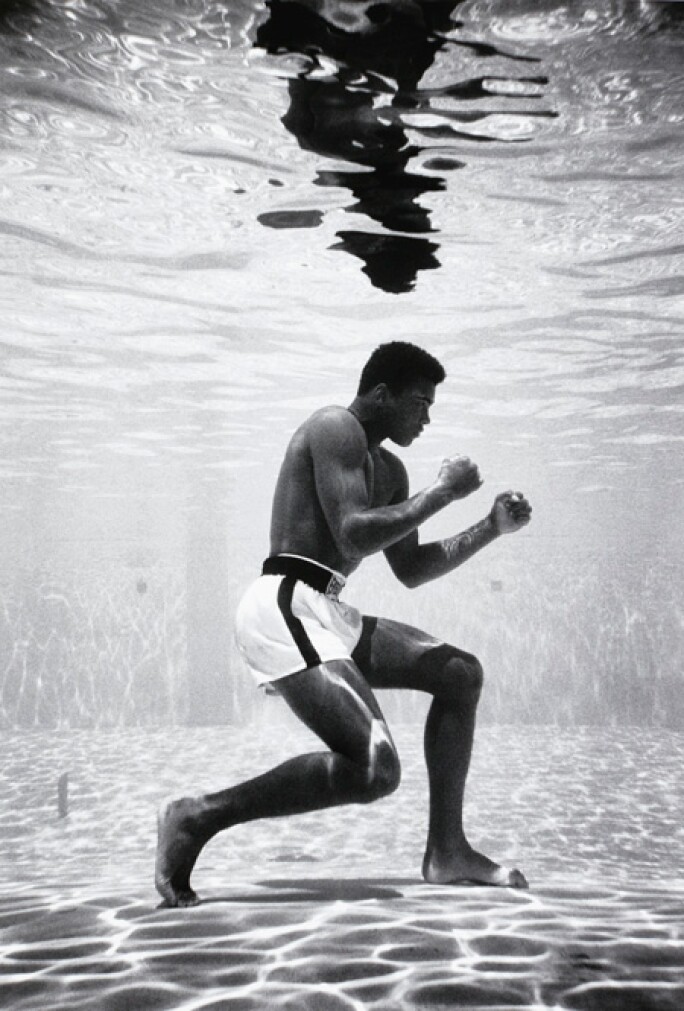A series of photographs with an emphasis on water and nature.
Uncategorized
Caffeine & Fitness
Fitness is a major part of my life. Throughout this quarantine I have had to adjust both my daily routine and my fitness routine. On days where I plan to exercise, I drink coffee and do a variety of dumbbell exercises in order to get some form of workout. The photos in this series personify my daily fitness routine.
Self Portraiture: Two Impactful Artists and Portraits
The man behind the iconic portrait of Steve Jobs was photographer Albert Watson. Watson treated this photoshoot with the one of the greatest technology moguls like a passport photo. His reasoning for doing this was the fact that Jobs was said to have hated having his photograph taken. In order to get the most out of a photograph of one of the most powerful men in the world, Watson simplified his approach and cut the length of the photoshoot and shot the portrait against white. Furthermore, in order to get a confident and powerful expression from Jobs, Watson instructed him to imagine he was speaking to several people who disagree with him, yet he knows that he is right. Watson’s adaptability was rewarded through the creation of one of the most well known portraits of the 21st century.

One of the most iconic and impressive photographs taken of a sports professional, ironically did not occur with the last few decades, but in 1961 by Flip Schulke, a Sports Illustrated photographer. One day in 1961, Schulke met with a young Muhammad Ali, in order to discuss possible photographs that can be taken in the near future. When Schulke suggested the underwater shot to Sports Illustrated, they rejected the idea. Schulke brought the idea to Life magazine who were eager to have the photograph published on their magazine. Schulke was able to photograph Ali during water resistance training in a swimming pool in Miami, where Ali stood in a boxer stance underwater for a prolonged time. Schulke notes that he jumped into the pool and swam around Ali, taking a series of photographs of the boxer still underwater. The reason why I am fascinated by this photograph is because it is actually a combination of imagination and ingenuity from both the photographer and the subject. Three years after the photograph was taken, Schulke notes that he was informed by Muhammad Ali, that the photograph was a staged attempt by him and his trainer, and that Ali actually could not swim.

Abstract Photography
A Life in Quarantine
Imaging/Processing
Street Photography on Wall St
Discursive Prompt
Media has brought positive improvement to our lives and society through the allowance of external awareness at remarkable ease. More specifically, without exerting too much effort, we have access to photographs and videos that depict current social and political issues. This aspect of media gives individuals an understanding of phenomena and trends occurring around them, from a local to global scale. Furthermore, this increased awareness allows for individuals to formulate opinions and ideas on a wide variety of topics. One negative aspect of this increased awareness is the ability for individuals to be easily manipulated, depending on the context of the photographs and videos, specifically if individuals are ignorant to the topic being displayed.
For example, some organizations, such as the EPA and ASPCA, utilize media to effectively spread their message of environmental protection and animal abuse in an efficient manner. While it is an effective method of getting their word across to the people, it can also misconstrue the beliefs and ideologies of the people receiving the message.

“Speak Up for Pigs: Say No to USDA’s Faster Slaughter” Photographed and posted by ASPCA
Final Project Proposal
Project Title: Portraits in the Streets of NYC
The main goal of my project is to capture portraits of individuals traveling throughout the busiest streets of Manhattan. More specifically, the theme of this project is to capture the expressions and movements of individuals at differing settings and angles, in order to tell a deeper story and give room for various possible interpretations, as to the mood of the subject(s) and the portrait itself.
One specific setting for these portraits will be Wall Street. Due to the fact that Wall Street is filled with numerous individuals going about their lives in a potentially very stressful environment, I will be able to capture different facial expressions that can tell the story of these individuals days. In order to capture these portraits, I will use a telephoto, allowing me to manipulate the framing of my images at greater distances. One possible problem I may run into is the fact that some may feel uncomfortable that their photo is being taken, and in the event that this does occur, full respect for their privacy will be given.
Associated Research:
Some inspiration for my final project was drawn from portrait photographers metropolitan photographers like:
- Allan Sekula, an American photographer capable of manipulating angles to better portray his portraits of not only humans, but inanimate objects as well.
- Phillip Lorca Dicorcia, an American Photographer who manipulated color balance and flash to highlight his subjects.
- Jomayra Texiera, a photographer previously mentioned on this blog, recently made popular through her photographs of metropolitan street life, utilizing a low-key aesthetic.
Expected Outcome:
- A series of 7-10 photographs of both human subjects and inanimate objects that can tell a story about metropolitan life.
- A few images using flash and a few using black and white color.
- A brief description on each image that still leaves room for audience interpretation






































